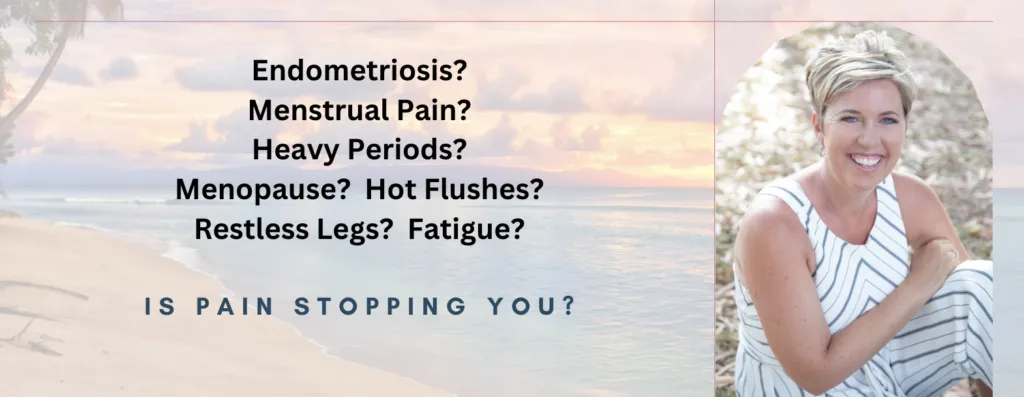Healing Trauma: Understanding the Messages from Your Body
How Energy Medicine Can Transform Chronic Pain into Purpose
Published: November 19, 2024

Personal Goals:
Spend more time with the family
Make self-care a priority
Go on a holiday at least once a year
OR
Professional Goals:
Gain more clients or custom
Earn more money
Explore further avenues
BUT... None of this is happening!
There are probably many legitimate reasons including a fully packed life that is blocking you from smashing those goals but...
Have you ever considered that perhaps they are just excuses? After all, it’s much easier to think about them, even write them down under the pretense you are "going after them". It's almost like you are telling yourself...
"I am going to accomplish these goals this year, don't you worry self, it's going to happen."
but then...
"Why is everything so complicated and hard... I never have enough time to get where
I want to go..."
The thing is it's so much easier to blame time, family commitments, or the dog. What you may not know is you could have real blocks that are contributing to the stalemate of achieving your goals rather than procrastination
(lightbulb moment!)
While there may be numerous obstacles standing between you and your goals, they are not insurmountable. By acknowledging and addressing these barriers head-on, you can empower yourself to break through limitations and achieve success. Stay focused, stay determined, and never underestimate the power of your own resilience and determination. Your goals are within reach –
all it takes is the courage to pursue them relentlessly.

Trauma is more than just a memory—it’s an experience stored deep within us, often manifesting in ways we don't immediately recognize. Unresolved trauma can speak through our bodies, whispering in aches, fatigue, or chronic illnesses, urging us to address what lies beneath. Understanding these messages and embracing holistic approaches can pave the way to relief and lasting balance.
How Trauma Manifests Physically
Trauma impacts the nervous system profoundly. When faced with a threat, the body activates its fight, flight, or freeze response, releasing stress hormones like cortisol and adrenaline. This is natural and protective. However, when trauma remains unresolved, the body can become "stuck" in this heightened state, leading to physical symptoms, including:
Chronic Pain: Persistent neck, back, or shoulder pain often correlates with unprocessed emotional stress.
Fatigue: The nervous system's constant overdrive can leave you feeling drained.
Digestive Issues: The gut-brain connection means trauma can disrupt digestion, causing bloating, cramps, or irritable bowel syndrome (IBS).
Immune Dysregulation: Chronic stress from unresolved trauma weakens immunity, making the body more susceptible to illnesses.
Tension and Muscle Stiffness: Emotional trauma often manifests as tightness or restricted movement, particularly in areas like the jaw or chest.
These physical symptoms are not just discomforts but messages from your body seeking attention and care.
The Importance of Listening to Your Body
Your body is incredibly intuitive. It often registers emotional pain long before your conscious mind does. By paying attention to physical sensations, you can begin to uncover underlying emotional or psychological wounds. For example, recurring headaches may be tied to stress, or difficulty breathing deeply might point to unacknowledged anxiety or grief.
Tuning into these signals is the first step toward healing. Ask yourself:
Where do I feel tension or discomfort?
What emotions arise when I focus on this sensation?
What might my body be asking for right now?
Holistic Approaches to Healing Trauma
Healing trauma involves addressing both the mind and body. A holistic approach integrates physical, emotional, and spiritual care, fostering balance and well-being.
1. Somatic Therapy
Somatic therapies focus on connecting mind and body to release stored trauma. Practices like somatic experiencing or body awareness exercises help regulate the nervous system, allowing you to process and let go of unresolved emotions.
2. Yoga and Movement Therapy
Gentle movement, such as yoga or tai chi, encourages the release of tension stored in the muscles and restores a sense of safety in the body. These practices also improve mindfulness, helping you reconnect with your physical self.
3. Breathwork
Breathing techniques like diaphragmatic breathing or pranayama calm the nervous system and enhance emotional processing. Breathwork sessions can unlock deep-seated emotions and provide profound relief.
4. Therapeutic Touch
Massage, craniosacral therapy, or acupuncture can release physical tension, promoting relaxation and emotional release. These therapies also stimulate the parasympathetic nervous system, which is essential for rest and healing.
5. Creative Expression
Art, music, or dance therapy offers a safe space to explore and express emotions that are difficult to verbalize. Creative activities can be profoundly cathartic and help in processing trauma.
6. Mindfulness and Meditation
Mindfulness practices bring awareness to the present moment, helping to reduce anxiety and promote emotional regulation. Meditation, particularly trauma-informed styles, can gently guide the mind and body toward healing.
7. Nutritional Support
Trauma can deplete essential nutrients, leading to imbalances. Consulting a nutritionist to support your recovery with anti-inflammatory and mood-boosting foods can be beneficial.
The Power of Integration
True healing occurs when we integrate these practices and allow space for our physical and emotional selves to align. It’s not about erasing the past but creating a compassionate relationship with it. Working with trauma-informed professionals can provide guidance and support on this journey.
Your Body as a Partner in Healing
When viewed with curiosity and compassion, the body’s signals become an ally, guiding you toward growth and resilience. Healing trauma is not a quick fix but a process that requires patience, self-awareness, and care. By embracing a holistic approach, you can unlock your body’s innate capacity for balance, bringing lasting relief to both your body and mind.
Remember: Your body isn’t betraying you; it’s speaking to you. Listen closely, respond lovingly, and trust in its ability to heal.
Trauma is more than just a memory—it’s an experience stored deep within us, often manifesting in ways we don't immediately recognize. Unresolved trauma can speak through our bodies, whispering in aches, fatigue,
or chronic illnesses, urging us to address what lies beneath. Understanding these messages and embracing holistic approaches can pave the way to relief and
lasting balance.
How Trauma Manifests Physically
Trauma impacts the nervous system profoundly. When faced with a threat, the body activates its fight, flight, or freeze response, releasing stress hormones like cortisol and adrenaline. This is natural and protective. However, when trauma remains unresolved, the body can become
"stuck" in this heightened state, leading to physical symptoms, including:
Chronic Pain : Persistent neck, back, or shoulder pain
often correlates with unprocessed emotional stress.
Fatigue : The nervous system's constant overdrive can
leave you feeling drained.
Digestive Issues: The gut-brain connection means
trauma can disrupt digestion, causing bloating, cramps, or irritable bowel syndrome (IBS).
Immune Dysregulation: Chronic stress from unresolved
trauma weakens immunity, making the body more susceptible to illnesses.
Tension and Muscle Stiffness: Emotional trauma often
manifests as tightness or restricted movement, Particularly in areas like the jaw or chest.
These physical symptoms are not just discomforts but
messages from your body seeking attention and care.
The Importance of Listening to Your Body
Your body is incredibly intuitive. It often registers
emotional pain long before your conscious mind does. By paying attention to physical sensations, you can begin to uncover underlying emotional or psychological wounds. For example, recurring headaches may be tied to stress, or difficulty breathing deeply might point to unacknowledged anxiety or grief.
Tuning into these signals is the first step toward healing.
Ask yourself:
Where do I feel tension or discomfort?
What emotions arise when I focus on this sensation?
What might my body be asking for right now?
Holistic Approaches to Healing Trauma
Healing trauma involves addressing both the mind and body. A holistic approach integrates physical, emotional, and spiritual care, fostering balance and well-being.
1. Somatic Therapy
Somatic therapies focus on connecting mind and body to
release stored trauma. Practices like somatic experiencing or body awareness exercises help regulate the nervous system, allowing you to process and let go
of unresolved emotions.
2. Yoga and Movement Therapy
Gentle movement, such as yoga or tai chi, encourages the release of tension stored in the muscles and restores a sense of safety in the body. These practices also improve mindfulness, helping you reconnect with your physical self.
3. Breathwork
Breathing techniques like diaphragmatic breathing or
pranayama calm the nervous system and enhance emotional processing. Breathwork sessions can unlock deep-seated emotions and provide profound relief.
4. Therapeutic Touch
Massage, craniosacral therapy, or acupuncture can release physical tension, promoting relaxation and emotional release. These therapies also stimulate the parasympathetic nervous system, which is essential for rest and healing.
5. Creative Expression
Art, music, or dance therapy offers a safe space to explore and express emotions that are difficult to verbalize. Creative activities can be profoundly cathartic and help in processing trauma.
6. Mindfulness and Meditation
Mindfulness practices bring awareness to the present moment, helping to reduce anxiety and promote emotional regulation. Meditation, particularly trauma-informed styles, can gently guide the mind and body toward healing.
7. Nutritional Support
Trauma can deplete essential nutrients, leading to
imbalances. Consulting a nutritionist to support your recovery with anti-inflammatory and mood-boosting foods can be beneficial.
The Power of Integration
True healing occurs when we integrate these practices and allow space for our physical and emotional selves to align. It’s not about erasing the past but creating a compassionate relationship with it. Working
with trauma-informed professionals can provide guidance and support on this journey.
Your Body as a Partner in Healing
When viewed with curiosity and compassion, the body’s
signals become an ally, guiding you toward growth and resilience. Healing trauma is not a quick fix but a process that requires patience, self-awareness,
and care. By embracing a holistic approach, you can unlock your body’s innate capacity for balance, bringing lasting relief to both your body and mind.
Remember: Your body isn’t betraying you; it’s speaking to you. Listen closely, respond lovingly, and trust in its ability to heal.



0424-373-597
ann@annolerharris.com
Queensland, Australia
Ann Noler Harris © 2024. All rights reserved.


0424-373-597
ann@annolerharris.com
Queensland, Australia
Ann Noler Harris © 2024. All rights reserved.





